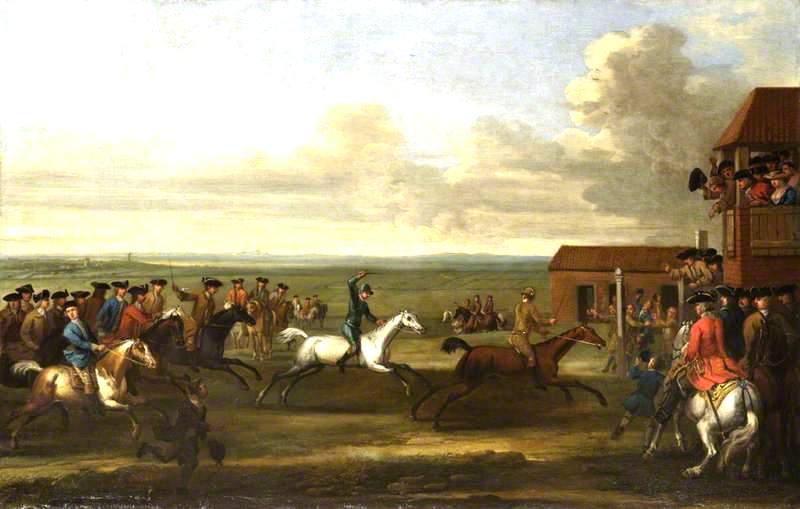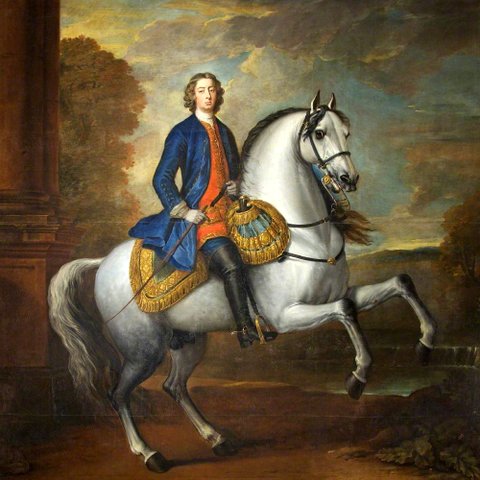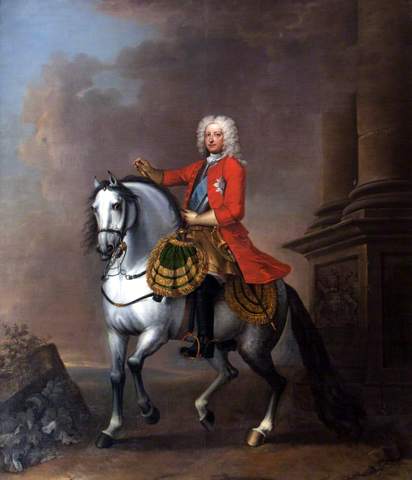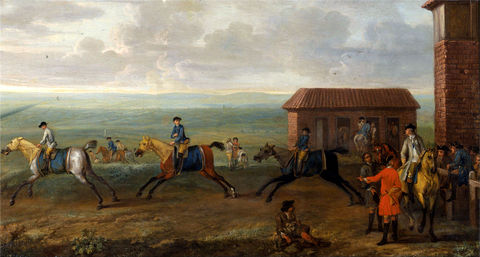WOOTTON, John
John Wootton was born at Snitterfield, near Stratford-upon-Avon, Warwickshire and baptised at Hampton Lucy on 17 June 1684, son of Thomas and Elizabeth Wootton. He began his working life as a page to the family of the Dukes of Beaufort who, in the 1720s, sent him to Rome where he acquired a classic landscape style based on that of Gaspard Dughet (1615-1675), which he used in some pure landscape paintings, as well as views of country houses and equine subjects. This introduced an alternative to the various Dutch and Flemish artists who had previously set the prevailing landscape style in Britain, and through intermediary artists such as George Lambert (1700-1765), the first British painter to base a career on landscape subjects and was to influence other British artists such as Thomas Gainsborough. Wootton is best remembered as a pioneer in the painting of sporting subjects and, together with Peter Tillemans and James Seymour (1702-1752), was considered the finest practitioner of the genre in his day, his paintings were very fashionable being sought after by British society including King George II, Frederick, Prince of Wales, and the Duke of Marlborough. An English painter of sporting subjects, battle scenes and landscapes and an illustrator and was active from about 1714 until his death in 1764/5 and was based in the capital of English horse racing at Newmarket, Suffolk. Wootton produced many portraits of horses and conversation pieces with a hunting or riding setting. He is now eclipsed in the field of animal paintings by the later George Stubbs (1724–1806), who is considered technically superior. John Wootton died in London on 13 November 1764. Examples of his animal painting can be found in the Tate Gallery, London, the Virginia Museum of Fine Arts, Richmond, the Yale Center for British Art, and in the Elizabethan Great Hall at Longleat.
Works by This Artist

|
Horse Race at NewmarketThe Duke of Bolton's 'Bay Bolton' defeating the Duke of Somerset's Grey 'Windham' at Newmarket on either 12th November 1712 or 4th April 1713.
|

|
Henry Hoare II (1705–1785), on HorsebackOil on canvas
|

|
George II (1683–1760) on HorsebackOil on canvas
|

|
Lord Portmore Watching Racehorses at Exercise on Newmarket HeathOil on canvas
|